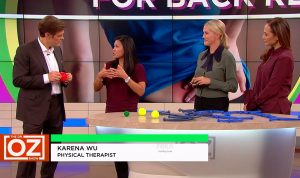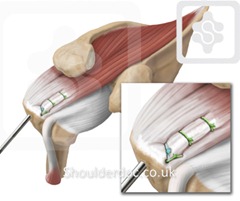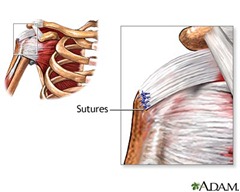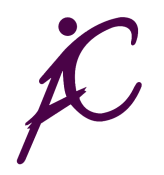 ActiveCare Physical Therapy, PC
ActiveCare Physical Therapy, PC
29 West 38th Street
Suite 601
New York, NY 10018

Rotator Cuff Repair Physical Therapy Rehabilitation
Physical Therapy is crucial after rotator cuff surgery, which involves sewing one of the rotator cuff muscles back together. The arm is completely immobilized for the first 4-6 weeks, meaning the arm is in a sling 24/7. This is to prevent any damage to what your surgeon has just fixed!
 The rehabilitation when the physician gives clearance is tremendously important in the initial phases, especially to restore range of motion. After immobilization, the shoulder can stiffen up and it can be difficult to lift the arm over shoulder height. As a result the deep joint capsule has to be stretched fairly aggressively. Physical therapy helps to restore the motion, both passively and with active assisted range of motion exercises.
The rehabilitation when the physician gives clearance is tremendously important in the initial phases, especially to restore range of motion. After immobilization, the shoulder can stiffen up and it can be difficult to lift the arm over shoulder height. As a result the deep joint capsule has to be stretched fairly aggressively. Physical therapy helps to restore the motion, both passively and with active assisted range of motion exercises.
Sometimes, a side effect of being immobilized is bicep tendonitis. From the initial injury up through surgery and immediately post surgically, there is a lot of muscle and disuse atrophy. When the arm is lifted, the bicep muscle gets used instead of the anterior deltoid, and this is the wrong shoulder muscle. It is a compensatory adaptation to assist in movement in the joint.
 To restore range of motion by stretching the bottom of the shoulder capsule, the Inferior Glide Stretch is a great home therapeutic exercise.
To restore range of motion by stretching the bottom of the shoulder capsule, the Inferior Glide Stretch is a great home therapeutic exercise.
The Sleeper Stretch is another shoulder capsule home therapeutic exercise, which helps with restoring range of motion in the back of the shoulder joint.
For re-training the supraspinatus (the primary rotator cuff muscle that is injured/repaired), the Full Can Exercise is a very specific exercise for strengthening.
Your Physical Therapist will instruct you on the proper technique and length of time to perform these exercises. They are easy enough to do during the day for your own home therapy. Between these three exercises, your shoulder will regain it’s true range of motion and strength. Rotator Cuff Repairs rely on Physical Therapy to return to normal function and get you well on the road to recovery!
